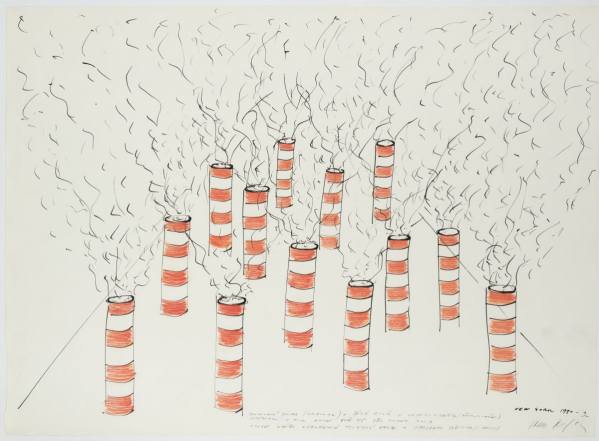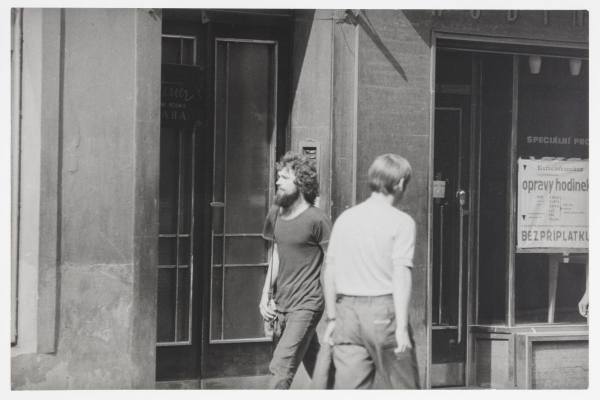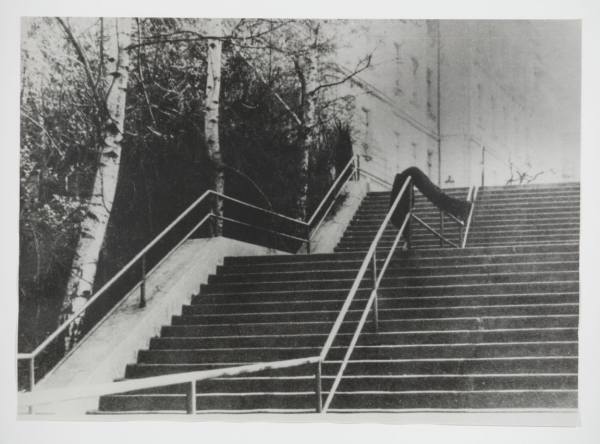At this time, when institutions and their exhibitions are closed, we are searching for new ways to come face to face with art. History provides evidence of the persistent innovation of creators, thanks to whom art remains relevant and close to people. This presentation of items from the National Gallery Prague’s depositories introduces some historical moments from the twentieth century, when artists took their work outside into shared urban space and the open landscape. In this way, they satisfied their inner necessity to be as close to ordinary life and daily reality as possible. Interventions in public space also provided a way in which to enter collective awareness, and to reflect a specific situation or just the general state of being. At other times, artists set out into the natural environment in order to help discover the essence of existence within the broader context and in relation to nature. The stimuli for this direction – a direction that crossed the boundaries of the institutional framework – also originated from the specific period in question and various degrees of freedom and non-freedom: art found its way no matter what the circumstances.
This selection from the National Gallery Prague’s collection includes the demonstration of Milan Knížák, a land art event by Zorka Ságlová, a happening by Jana Želibská, a body art piece by Karel Miler, a performance by Jiří Kovanda, and sketches of in situ installations by Ivan Kafka and Jan Ambrůz in the urban structure. Art in common space highlights the need for solidarity and self-awareness. At the same time, it places the individual within the broader social context and overall environment, and so brings our existential perception into greater balance. Because of the reality of today set against the backdrop of the pandemic, we feel the urgency of these needs even more. Art plays several important roles in society, ranging from mental regeneration and intellectual stimulation to helping community development.
Curator: Adéla Janíčková












